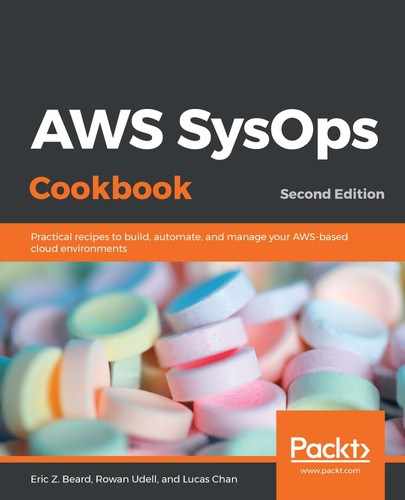CloudFormation parameters are the input values you define when creating or updating a stack, similar to how you provide parameters to any command-line tools you might use. They allow you to customize your stack without making changes to your template. Common examples of what parameters might be used for are the following:
- EC2 AMI ID: You may wish to redeploy your stack with a new AMI that has the latest security patches installed.
- Subnet IDs: You could have a list of subnets that an autoscaling group should deploy servers in. These subnet IDs will be different between your dev, test, and production environments.
- Endpoint targets and credentials: These include things such as API hostnames, usernames, and passwords.
You'll find that there are a number of parameter types. In brief, they are as follows:
- String
- Number
- List
- CommaDelimitedList
In addition to these, AWS provides some AWS-specific parameter types. These can be particularly handy when you are executing your template via the CloudFormation web console. For example, a parameter of the AWS::EC2::AvailabilityZone:: type causes the web console to display a dropdown list of valid AZs for this parameter. In the ap-southeast-2 region, the list would look like this:
- ap-southeast-2a
- ap-southeast-2b
- ap-southeast-2c
The list of AWS-specific parameter types is steadily growing and is so long that we can't list them here. We'll use many of them throughout this book, however, and they can easily be found in the AWS CloudFormation documentation.
When creating or updating a stack, you will need to provide values for all the parameters you've defined in your template. Where it makes sense, you can define default values for a parameter. For example, you might have a parameter called debug that tells your application to run in debug mode. Typically, you don't want this mode enabled by default, so you can set the default value for this parameter to false, disabled, or something else your application understands. Of course, this value can be overridden when you're creating or updating a stack.
You can – and should – provide a short, meaningful description for each parameter. These are displayed in the web console, next to each parameter field. When used properly, they provide hints and context to whoever is trying to run your CloudFormation template.
At this point, we need to introduce the built-in Ref function. When you need to reference a parameter value, you use this function to do so:
KeyName:
Ref: EC2KeyName
While Ref isn't the only built-in function you'll need to know about, it's almost certainly going to be the one you'll use the most. We'll talk more about built-in functions later in this chapter.
